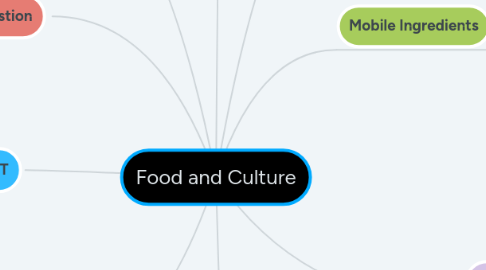
1. Eating IN
1.1. Gastro-politiics
1.2. Shared meals
1.3. Host and guest roles
1.4. different types of feasts
1.4.1. Types of socities feasts
2. Eating OUT
2.1. Industrial cusines
2.2. Nutritional education
2.3. Epidemics of obesity and eating out
2.3.1. non-communicable diseases
3. Local Indigestion
3.1. Presence of fast food
3.2. Tea and Coffee
3.3. Farmers markets
3.4. Ethical comsumption
4. Global Indigestion
4.1. global production and distribution
4.2. food policies and agendas
4.3. four pillars of food security
4.4. Indigenous eating
5. Classifying Food
5.1. Omnivore's dilemma
5.1.1. The evolutionary equipment that taught us what to eat are our senses. It also mentioned that human sociability meant it was passed on, allowing children to inscribe tastes, features, and textures into their memories adding a sensory dimension to the identity of a food.
5.2. Diet, habits and cusine
5.3. Food classifications
5.4. Food prohibitions
6. Settled Ingredients
6.1. Food getting strategies
6.2. Food production
6.2.1. Domestication of plants and animals
6.2.1.1. modify practices to make sure that there is growth encouragement with slight environmental modifications to processes in order improve product and ensure consistency
6.3. Transformation into cusines
6.4. Sustainability
6.4.1. Layers of disconnection creating challenges
7. Mobile Ingredients
7.1. Origin of food
7.2. Harvesting
7.3. Industrial/Global food industry
7.3.1. “The placement, packaging, labels, brands, are all concerned with making meaning, marketing the food for consumers, directing cooking, and determining consumption.” (pg. 83) Crowther, G. (2013). Eating Culture: An Anthropological Guide to Food. Canada: University of Toronto Press.
7.4. https://youtu.be/-T_EAoYE5aw
8. Cooks and Kitchens
8.1. Techniques and aesthetics
8.1.1. Origin of technique
8.2. Consequences of strategies/techniques
8.2.1. "Each food-getting strategy patterns cooking, making it a meaningful part of life, and yet it is overlooked." (page 102) Crowther, G. (2013). Eating Culture: An Anthropological Guide to Food. Canada: University of Toronto Press.
8.3. Cooking and gender
8.3.1. Does it matter if male or female prepare it

